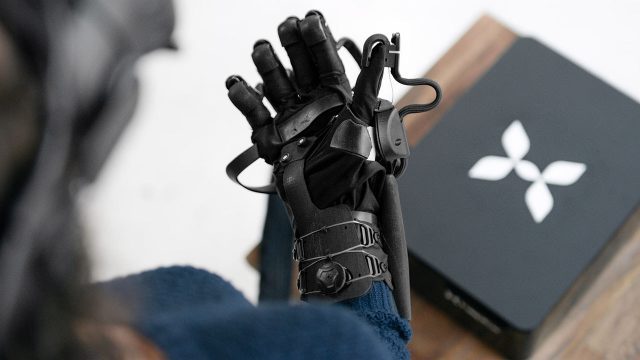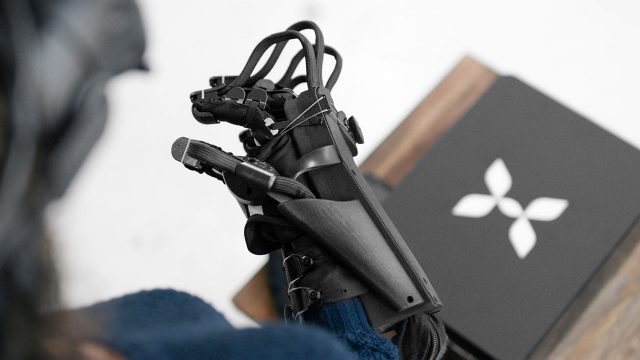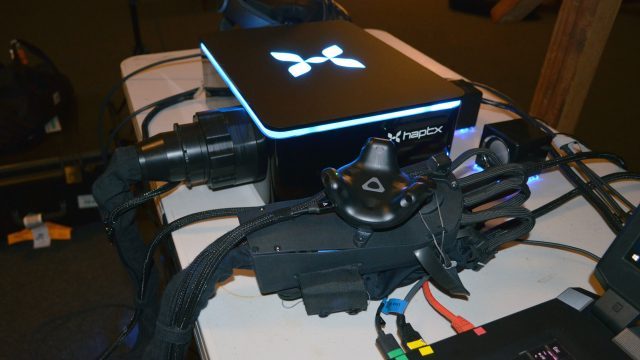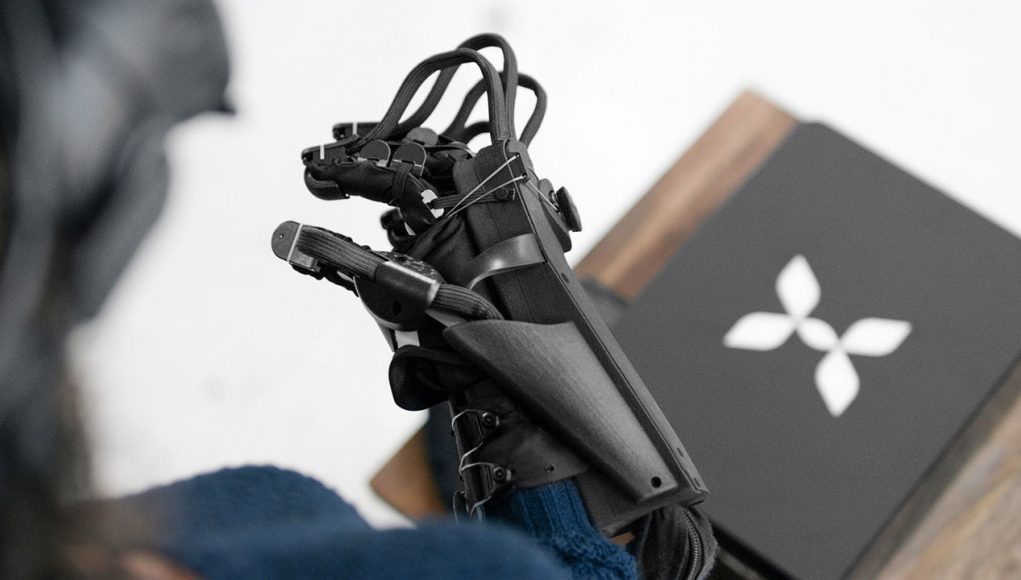Enterprise First

There’s other VR haptic solutions out there that are interesting in their own right, but as far as the level of detail, I haven’t seen anything else come close. Granted, the HaptX glove demo was clearly built for what it does best; it was focused more on subtle, small-scale effectives, and didn’t include any of the common VR game mechanics like gripping and shooting a gun, drawing a bow, throwing a grenade, or swinging a sword.
I’ll be interested to know how those sorts of actions feel through the HaptX glove, but the company has a fair excuse for not yet touting that sort of functionality; the product is headed first toward the enterprise sector (where shooting pistols and swinging broad swords isn’t exactly the main focus). Rubin says that HaptX’s goal is to offer a VR glove product which works as a generalized haptic display, and can be used to replace expensive, purpose-built props to make training and simulation uses of VR cheaper. He also notes the potential for design and manufacturing, architecture, engineering, construction and more as places where the glove could be useful.

Rubin says that, following this feature prototype, the HaptX team is busy building the first productized version—an evaluation kit, with 20 companies already on board to receive the kits in 2018. And though it’s targeting enterprise first, the company is also pursuing out-of-home entertainment usage for the HaptX glove, and, in the longer term, the consumer market. That’s not to say it’ll necessarily be an easy challenge though.
A Fitting Challenge
HaptX has clearly demonstrated the capability of their underlying haptic technology. But perhaps an even bigger challenge will be figuring out how to package the tech into something that’s ergonomically agreeable. The monster prototype that I saw is simply too big, bulky, and too slow to put on to be useful (not to mention the large pieces of additional equipment needed to power it). It also didn’t fit my hand particularly well; I found myself regularly tucking my fingers back into the finger tip caps in order to maintain the best haptic feeling. By the end of the demo, I could feel the circulation to my hand was significantly reduced.

Rubin tells me that the team is confident they can tackle these challenges. For one, the current prototype is a one-size-fits-all ordeal, and since human hands can vary quite drastically in size, this is far from ideal. A range of sizes will allow a more snug fit for more people. And when it comes to extra equipment (like the control box and the air compressor) needed to power the glove, Rubin says that in addition to using much smaller regulators to reduce the size of the control box, the company expects to be able to build the compressor directly into the control box, thereby simplifying the additional equipment.
– – — – –
The company’s ultimate vision, Rubin says, is for HaptX to build its haptic tech into a full body suit for total immersion. The company is purportedly already experimenting with larger wearable arrangements of its micro-pneumatic material which could one day be sewn into vests, shoes, and more to bring an even greater amount of your body into VR.







